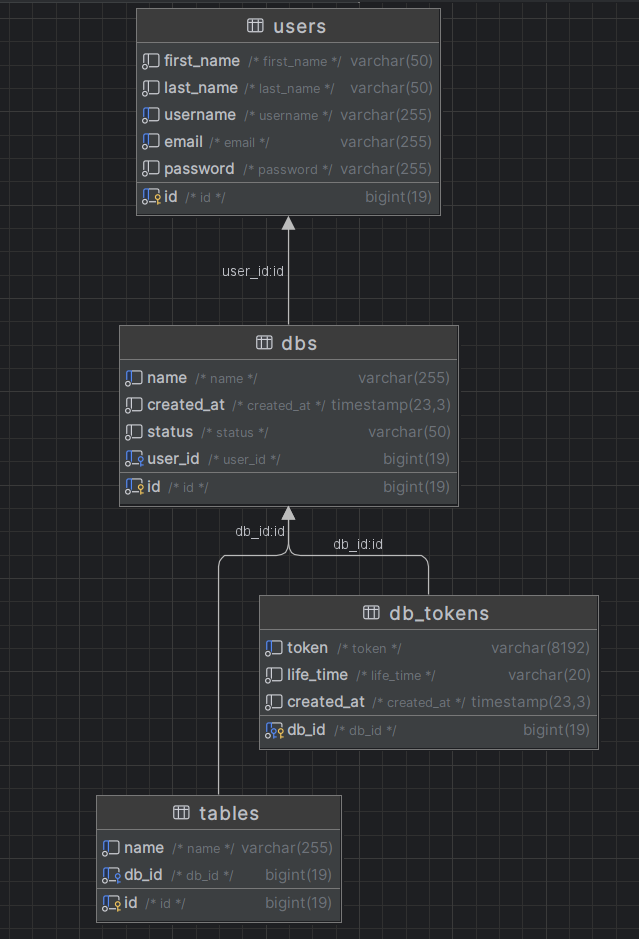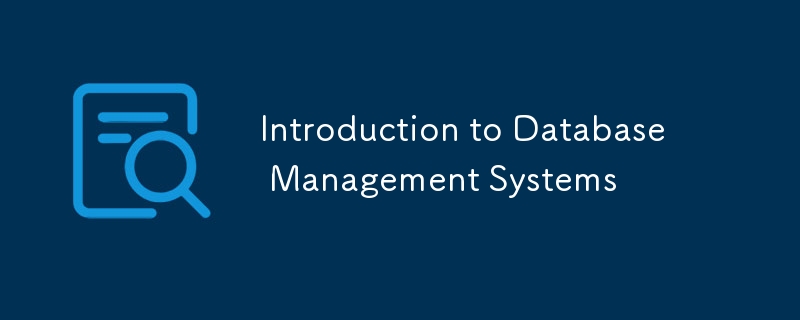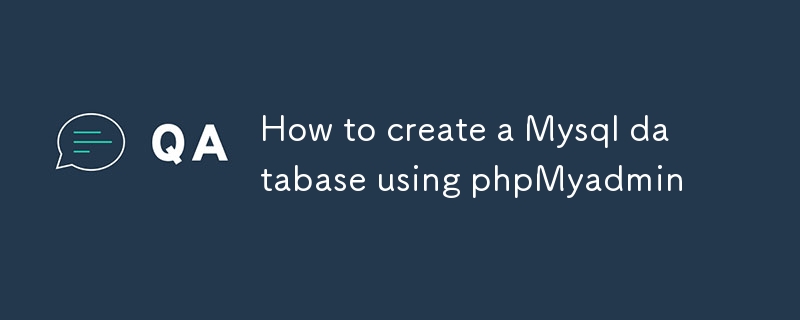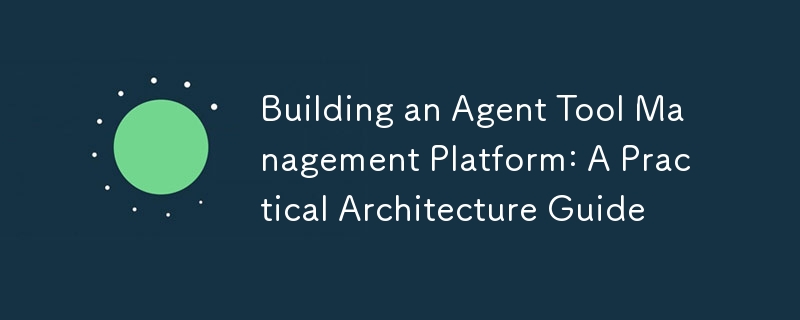Found a total of 10000 related content

phpMyAdmin: An Introduction to the Database Management Tool
Article Introduction:phpMyAdmin simplifies MySQL database management through the web interface. 1) Create, modify, and delete databases and tables; 2) Execute SQL queries; 3) Import and export data; 4) Manage user permissions. It interacts with MySQL through a web server, providing an intuitive operation interface.
2025-04-28
comment 0
504

Inside Database Management Tool
Article Introduction:In this article, we’ll dive into the inner workings of the database management tool, exploring the architecture and technologies that power it. Understanding how the application functions behind the scenes will give you insight into its design, how i
2024-11-27
comment 0
1200

Finding the Perfect Database Management Tool: The Search Continues
Article Introduction:The steps to select a database management tool include: 1. Understand the definition and functionality of DBMS, 2. Evaluate the working principle of the tool and query optimizer performance, 3. Master the basic and advanced usage, 4. Identify and resolve common errors, 5. Pay attention to performance optimization and best practices. Through these steps, you can find the most suitable database management tools based on project needs to ensure efficient and secure data management.
2025-04-17
comment 0
568

phpMyAdmin: A Web-Based Interface for Database Management
Article Introduction:phpMyAdmin is a web-based tool for managing MySQL and MariaDB databases. 1) It provides an intuitive user interface that allows various database operations through the browser. 2) phpMyAdmin interacts with the database through PHP scripts and converts operations into SQL commands. 3) Users can perform operations from basic data browsing and editing to advanced SQL queries and view management. 4) Common problems include connection failures and SQL syntax errors, which can be solved by checking configuration and syntax. 5) Performance optimization suggestions include avoiding large-scale data operations during peak periods and regularly maintaining databases.
2025-04-27
comment 0
890

MySQL, phpMyAdmin, and Database Administration: A Guide
Article Introduction:MySQL and phpMyAdmin are powerful database management tools. 1.MySQL is an open source relational database management system, and phpMyAdmin is a MySQL management tool based on the Web. 2.MySQL works through the client-server model, and phpMyAdmin simplifies database operations. 3. Basic usage includes creating tables and data operations, and advanced usage involves stored procedures and triggers. 4. Common errors include SQL syntax errors, permission issues and performance bottlenecks. 5. Optimization techniques include reasonable use of indexes, optimized query, regular maintenance and backup and recovery.
2025-04-15
comment 0
882

Database Management Tool
Article Introduction:Introduction
Managing databases and performing CRUD operations are fundamental tasks for developers building data-driven applications. While many database management systems (DBMS) exist, they can be complex and cumbersome to interact with, especial
2024-11-18
comment 0
975

Advanced phpMyAdmin Tutorial: Boosting Database Management Efficiency
Article Introduction:phpMyAdmin provides a variety of advanced features to improve database management efficiency. 1. The SQL query editor allows writing and executing complex queries and optimizing table structure. 2. The data export and import functions support backup and migration of data. 3. Performance optimization improves efficiency through indexing and query optimization, and regular maintenance keeps the database running efficiently.
2025-04-04
comment 0
888

TableSavvy (MYSQL database management software)
Article Introduction:TableSavvy: A user-friendly Python database management tool TableSavvy is an application developed based on Python to simplify the management and data visualization of database tables. It combines PyQt5 and MySQLConnector/Python to provide an intuitive graphical interface that facilitates users to connect to MySQL database, browse table structures and operate data. This tool is ideal for database administrators, developers, and anyone who needs to manage database tables efficiently. Main functions: Convenient database connection: Easily connect to MySQL database through a simple interface, just enter the host address, username, password and database name. Efficient table management:
2025-04-08
comment 0
999

How To Install DBeaver Universal Database Tool in Linux
Article Introduction:DBeaver is an open-source, fully-featured, and cross-platform universal database management tool and SQL client that runs on Linux operating systems, Windows, and macOS. It supports more than 80 database management systems including PostgreSQL, MySQL
2025-07-04
comment 0
215

Navicat: An Introduction to Database Management Tools
Article Introduction:Navicat is a powerful and user-friendly database management tool for beginners and veterans. 1. It supports multiple database types and provides unified interface management. 2. Communication with the database through JDBC or ODBC to simplify operations. 3. Provide SQL editing and optimization tools to improve query efficiency. 4. Support data migration and model design to improve work efficiency.
2025-04-21
comment 0
937

Using phpMyAdmin: A Guide for Database Administrators
Article Introduction:phpMyAdmin is a web-based MySQL database management tool that provides an intuitive interface to manage databases. 1. It allows creating, modifying, deleting databases and tables, executing SQL queries, importing and exporting data, performing user management and permission settings. 2. By establishing a connection with the MySQL server, phpMyAdmin converts user requests into SQL commands and executes them. 3. The basic usage includes viewing table data, and the advanced usage supports complex SQL queries. 4. Common errors such as connection failure and query syntax errors can be debugged by checking the server status and using the SQL editor. 5. Performance optimization can be achieved by creating indexes for common fields, regularly backing up the database, and keeping the structure neat.
2025-04-25
comment 0
952

MySQL: The Database, phpMyAdmin: The Management Interface
Article Introduction:MySQL and phpMyAdmin can be effectively managed through the following steps: 1. Create and delete database: Just click in phpMyAdmin to complete. 2. Manage tables: You can create tables, modify structures, and add indexes. 3. Data operation: Supports inserting, updating, deleting data and executing SQL queries. 4. Import and export data: Supports SQL, CSV, XML and other formats. 5. Optimization and monitoring: Use the OPTIMIZETABLE command to optimize tables and use query analyzers and monitoring tools to solve performance problems.
2025-04-29
comment 0
1107

phpMyAdmin: Enhancing Database Productivity
Article Introduction:phpMyAdmin improves database productivity through an intuitive web interface: 1. Simplify the creation and management of databases and tables; 2. Support complex SQL queries and data operations; 3. Provide relationship view functions to manage table relationships; 4. Optimize performance and best practices to improve efficiency.
2025-04-13
comment 0
981

Introduction to Database Management Systems
Article Introduction:Introduction to Database Management Systems (DBMS)
Database Management Systems (DBMS) are an essential component of modern software applications and are integral to managing, storing, and retrieving data efficiently. They provide a systematic w
2025-01-05
comment 0
986

Security Steps to Delete a Database with PHPMyAdmin
Article Introduction:When deleting a database using PHPMyAdmin, the key steps to ensure operational security include: 1. Verify operator permissions and ensure that only high-privileged users can delete the database through MySQL user permission management; 2. Confirm the operation intention, use the confirmation dialog box and ask to enter the database name; 3. Enable "Safe Mode", which requires additional verification steps; 4. Back up the database before deletion to prevent data loss.
2025-05-19
comment 0
624

How to manage mysql database using phpmyadmin
Article Introduction:This article explains how to use phpMyAdmin to manage MySQL databases. It covers accessing phpMyAdmin, basic database operations (creating/managing databases and tables, importing/exporting data), executing SQL queries, and optimizing database perfo
2025-03-04
comment 0
1023

phpmyadmin connection to database
Article Introduction:How to connect to the database through phpMyAdmin: Visit the phpMyAdmin website and log in with credentials. Select the database to connect to. Under the Actions tab, select the Export option. Configure export settings and select format, table, and data range. Save the exported file. Select the Import tab in the target database and browse the exported files. Click the "Execute" button and use the "Query" tab to verify that the import is successful.
2025-04-10
comment 0
346

phpMyAdmin Performance Optimization: Speed Up Your Database Administration
Article Introduction:The steps to optimize phpMyAdmin performance include: 1. Adjust the configuration file, such as setting compressed transmission and limiting the number of rows displayed per page; 2. Optimizing MySQL query and cache settings; 3. Use EXPLAIN analysis query plan to find out performance bottlenecks. Through these methods, the response speed and processing power of phpMyAdmin can be significantly improved and database management efficiency can be improved.
2025-04-08
comment 0
623

How to create a Mysql database using phpMyadmin
Article Introduction:This article explains how to create MySQL databases using phpMyAdmin. It details the steps: accessing phpMyAdmin, locating the "Create new database" option, entering the database name, (optionally) selecting character set and collation, cl
2025-03-04
comment 0
1205

Building an Agent Tool Management Platform: A Practical Architecture Guide
Article Introduction:This article will walk you through designing and implementing an enterprise-level AI Agent tool management platform. Whether you're building an AI Agent system or interested in tool management platforms, you'll find practical design patterns and tech
2024-11-28
comment 0
801



















